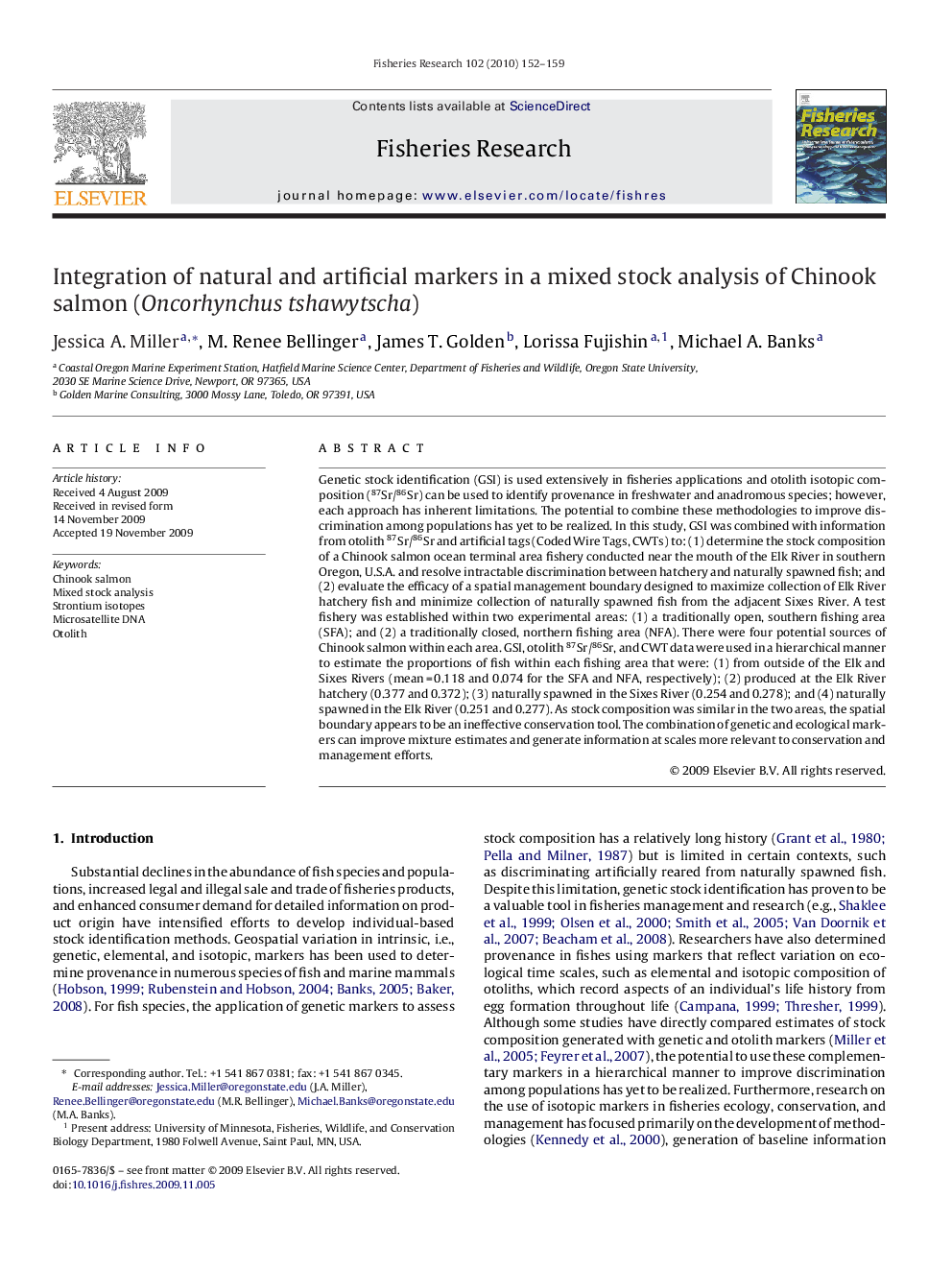| کد مقاله | کد نشریه | سال انتشار | مقاله انگلیسی | نسخه تمام متن |
|---|---|---|---|---|
| 4543791 | 1626851 | 2010 | 8 صفحه PDF | دانلود رایگان |

Genetic stock identification (GSI) is used extensively in fisheries applications and otolith isotopic composition (87Sr/86Sr) can be used to identify provenance in freshwater and anadromous species; however, each approach has inherent limitations. The potential to combine these methodologies to improve discrimination among populations has yet to be realized. In this study, GSI was combined with information from otolith 87Sr/86Sr and artificial tags (Coded Wire Tags, CWTs) to: (1) determine the stock composition of a Chinook salmon ocean terminal area fishery conducted near the mouth of the Elk River in southern Oregon, U.S.A. and resolve intractable discrimination between hatchery and naturally spawned fish; and (2) evaluate the efficacy of a spatial management boundary designed to maximize collection of Elk River hatchery fish and minimize collection of naturally spawned fish from the adjacent Sixes River. A test fishery was established within two experimental areas: (1) a traditionally open, southern fishing area (SFA); and (2) a traditionally closed, northern fishing area (NFA). There were four potential sources of Chinook salmon within each area. GSI, otolith 87Sr/86Sr, and CWT data were used in a hierarchical manner to estimate the proportions of fish within each fishing area that were: (1) from outside of the Elk and Sixes Rivers (mean = 0.118 and 0.074 for the SFA and NFA, respectively); (2) produced at the Elk River hatchery (0.377 and 0.372); (3) naturally spawned in the Sixes River (0.254 and 0.278); and (4) naturally spawned in the Elk River (0.251 and 0.277). As stock composition was similar in the two areas, the spatial boundary appears to be an ineffective conservation tool. The combination of genetic and ecological markers can improve mixture estimates and generate information at scales more relevant to conservation and management efforts.
Journal: Fisheries Research - Volume 102, Issues 1–2, February 2010, Pages 152–159